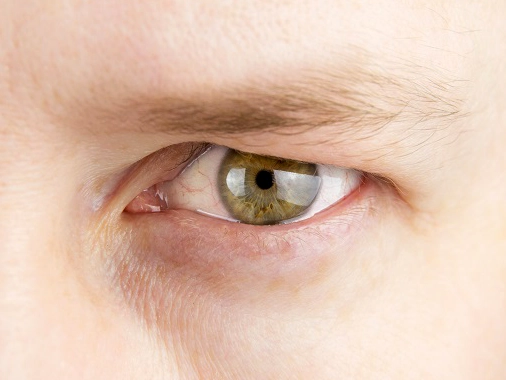
Ptosis is a condition in which the upper eyelid is positioned lower than normal, resulting in a narrower-than-normal eyelid opening. In some cases, this drooping can cover the pupil completely.
Eyelid drooping primarily occurs due to congenital or acquired disorders of the muscle that lifts the eyelid (levator muscle).
The most common cause is congenital weakness of this muscle, referred to as congenital ptosis.
The second most common cause is degenerative changes in the muscle that occur with aging. This type is known as involutional or aponeurotic ptosis.
In addition, neurological (nerve-related) or myogenic (muscle-related) disorders affecting this muscle can lead to eyelid drooping. Sometimes, drooping of the eyelid can be an early sign of a serious neurological or muscular disease.
Eyelid drooping can also occur as a result of injuries involving the eyelid muscle.
Except for rare neurological or muscle-related conditions, eyelid drooping almost always requires surgical correction.
In children, early correction of eyelid drooping (surgery) is particularly important to prevent the development of amblyopia (lazy eye).
The main principle of eyelid drooping surgery is to strengthen the weakened eyelid-lifting muscle (levator muscle). If this muscle is very weak, strengthening techniques alone may not be effective. In such cases, the eyelid is elevated using various surgical techniques and materials, commonly referred to as suspension surgeries, to achieve a normal eyelid position.
The most common complication is undercorrection, where the eyelid is not sufficiently elevated. This usually requires a second surgery. Overcorrection (hypercorrrection),which may prevent the eye from fully closing, is much less common. If this occurs and cannot be resolved with massage or other methods, additional surgery may be needed.
Eyelid drooping surgery is considered a specialized procedure among eyelid surgeries. Therefore, it is important that these operations are performed by ophthalmologists who are specialized in Oculoplastic Surgery.